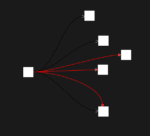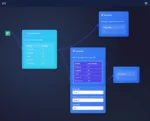
by tyler garrett | Jun 18, 2025 | Data Processing
In today’s data-driven landscape, quantiles and percentiles serve as integral tools for summarizing large datasets. Reliability, efficiency, and performance are paramount, but when data reaches petabyte scale, calculating these statistical benchmarks becomes computationally daunting. Organizations struggle with fully sorted datasets due to the high computational overhead and resource-intensive processes involved. However, modern techniques and smart algorithmic strategies now exist to accurately estimate quantiles without the painstaking task of sorting entire massive datasets. Leveraging these sophisticated methods helps businesses deliver blazing-fast insights, effectively navigating away from common bottlenecks inherent in sorting strategies. Embracing these innovative solutions positions organizations to enhance decision-making processes dramatically, streamlining efficiency, and ultimately outperforming competitors. Let’s dive deep into quantile algorithms that overcome the sorts barrier, enabling faster analytics, insightful analysis, and driving impactful, data-driven decisions at scale.
Understanding the Challenge: Why Sorting at Scale Hurts Performance
Sorting massive datasets can quickly become a nightmare, especially when we’re talking about distributed systems or cloud environments. The traditional method of computing quantiles involves ranking and sorting every single data point, an approach that’s computationally expensive and time-consuming when datasets swell beyond terabytes. The resources required aren’t negligible—both hardware capacity and valuable developer time become constrained as data grows exponentially. Organizations striving for real-time analytics or near-instantaneous reporting often run into challenging bottlenecks and unsustainable ETL pipelines.
Moreover, sorting large-scale datasets introduces significant performance drawbacks, identified as one of the main culprits behind inefficiencies in distributed data processing shuffle operations. As your distributed ETL workflows become larger and more complex, sorting steps severely disrupt scalability and performance optimization efforts.
Leveraging a smarter approach, such as streaming quantile estimation techniques or approximate algorithms, can effectively replace traditional full sorts, liberating analysts from substantial overhead. Understanding and implementing proper algorithmic solutions lets your enterprise maintain performance standards without sacrificing accuracy, ensuring your data analytics remain both responsive and insightful.
The Concept of Approximate Quantiles
Approximate quantiles offer a highly pragmatic alternative to exact quantile computation, aiming for accuracy within predefined error boundaries rather than absolute perfection. The core philosophy behind approximate quantile computation acknowledges that slight deviations are usually acceptable—particularly in massive datasets—as long as they remain within statistically meaningful bounds. Approximation algorithms leverage sampling, streaming summaries, or data sketches to quickly deliver results that match real-world analytics needs.
Techniques such as Greenwald-Khanna algorithms, T-digest data structures, or histogram-based approximation methods have gained popularity due to their lower computational overhead. These methods intelligently compress the distribution of data points by maintaining a lightweight footprint, ensuring fast computations with minimal resource requirements. They allow organizations to incorporate large-scale quantile computations directly in real-time query processing or batch processing workflows, freeing up infrastructure resources and reducing latency considerably.
Moreover, approximate quantiles resonate directly with best practices discussed in our article on statistical disclosure control implementation techniques, allowing sensitive data queries to be performed efficiently without unnecessary processing power on precise sorting.
Leveraging Data Sketches for Efficiency and Accuracy
Data sketches have emerged as one of the most compelling tools for large-scale quantile estimation. They are compact yet powerful data structures designed explicitly for approximate analytics. Data sketches, such as Quantile Digest (Q-Digest) or the popular T-Digest algorithm, efficiently encode summary information about distributions, allowing rapid computation of percentiles and quantiles across massive datasets.
These intelligent structure-based approximations maintain accuracy within acceptable confidence intervals while significantly decreasing computational overhead. Data scientists and engineers can easily integrate sketches into complex analytics pipelines, enhancing scalability in enterprise-level analytics strategies. As mentioned in our article focused on fuzzy entity resolution techniques for master data management, leveraging innovative methods like data sketches is essential to enhancing accuracy without sacrificing scale.
Adopting sketch-based solutions not only enhances analytical efficiency—it also simplifies data-management complexity and reduces infrastructure reliance on expansive clusters. For decision-makers interested in deploying architectures to increase the performance and effectiveness of their quantile-focused pipelines, their natural step should include consultations focused on improving data processes—like an advanced ETL consulting services.
Incorporating External Reference Data and Streaming Architectures for Improved Scalability
Organizations often find correlation and insights by integrating quantile statistics with external datasets, positioning them as crucial aspects of data maturity and insight generation. However, integrating external reference data traditionally increases processing complexity, making exact quantile computation even more impractical at scale. That’s when leveraging external reference data integration architecture and streaming-driven designs becomes incredibly advantageous.
Streaming architectures permit real-time computation using approximate quantile techniques, quickly assimilating and integrating external data sources while instantly recalculating percentiles and quantiles. Advanced integration strategies grant organizations the versatility needed to manage dynamic data inputs seamlessly, enhancing analytic insights without worsening processing delays. Coupling streaming architectures with external reference data enables more real-time operational intelligence, giving organizations the strategic advantages necessary to pivot quickly amid changing market conditions.
This incorporation of continual and systematic data refinement processes aligns closely with other methods to boost success, including our advice for analysts and data engineers found in our well-known interview prep guide, Data Engineering Interview Questions. These combined approaches ensure your analytics architecture stays ahead of competitors in terms of agility and accuracy.
Practical Benefits and Real-World Use Cases
Quantile approximation scenarios span sectors from financial services and healthcare to e-commerce and telecommunications, empowering businesses with immediate insights and operational optimization. Let’s consider the domain of online e-commerce, where successful platforms depend significantly on accurate yet rapid percentile information—such as optimal pricing bands, inventory predictive analytics, or forecasting demand by customer segments. Traditional sorts, given high throughput transactional data, would fail to provide timely insights for decision-making. Implementing smart algorithms dramatically improves this process.
We’ve also implemented approximate quantile algorithms in healthcare analytics scenarios to rapidly evaluate patient populations’ blood pressure percentiles, optimized patient care pathways, and accelerated clinical decision-making—all without the burdensome delays of traditional sorting and ranking algorithms. Meanwhile, tech-savvy banking institutions streamline fraud detection and anomaly detection workflows through approximate quantiles, enhancing clarity in threat identification, financial forecasting, and strategic decision-making.
Throughout these real-world applications, the underlying concept remains consistent: reduce the unnecessary overhead by switching intelligently to efficient calculation methods. Complementing such transformations with collaborative, iterative approaches emphasized in analytical working sessions designed to reduce miscommunication can ensure smooth project progression and rapid adoption of quantile approximation methodologies within your teams.
Conclusion: Embrace the Future With Approximate Quantiles
The technological shift towards quantile estimation and approximation methods represents one of the more strategic and practical responses to data challenges at scale. Industries that modernize their analytics pipelines using these advanced approximation methods quickly reap heightened accuracy, operational advantages, and tremendous resource efficiencies. Avoiding sluggish full sorts translates directly into streamlined data operations, improved responsiveness, reduced infrastructure expenditures, and more timely insight for critical business decisions.
Understanding these solutions and incorporating data sketches, streaming architectures, and efficient ETL processes can substantially benefit leaders seeking significant competitive advantages in today’s data-driven economy. Your organization’s journey toward smarter analytics begins with confidently choosing methods that efficiently handle quantile computations—ensuring your data remains a strategic asset rather than a bottleneck. Step confidently toward your organization’s data-driven future by embracing approximate quantiles.

by tyler garrett | Jun 18, 2025 | Data Processing
In today’s fast-paced technology landscape, businesses face unprecedented complexities, rapid evolutions, and increasingly ambitious goals. Decision-makers recognize the critical need to standardize processes to maintain clarity, drive efficiency, and encourage innovation within their organizations. Enter the Template Method, a software design pattern that has become essential for tech leaders who aim to streamline operations, minimize redundancy, and chart clear roadmaps across teams. Much like skilled architects or engineers rely on precise blueprints, data-driven organizations leverage Template Method patterns to build robust, maintainable, and scalable solutions. In this article, we demystify the power and purpose behind the Template Method pattern, helping you recognize its role as a crucial tool in your strategic technology arsenal.
Understanding the Template Method: What exactly is it?
The Template Method is a behavioral design pattern documented in the famous “Gang of Four” book, Design Patterns: Elements of Reusable Object-Oriented Software. At its core, this pattern captures the common functionalities of an algorithm in a superclass or an abstract framework, allowing subclasses to redefine certain steps without altering the overarching workflow structure. It’s essentially about decomposing large processes into standardized, easy-to-follow steps that everyone on the development team can understand and implement efficiently.
When you choose the Template Method pattern, you define the “template” or skeleton of an algorithm within a parent class. Certain parts of this algorithm are clearly marked out for subclasses to provide customized implementations or overrides, ensuring flexibility and adaptability without sacrificing standardization. This framework promotes adherence to fundamental best practices while liberating teams from repetitive setups, allowing them to focus energy on business-critical functionalities rather than redundant coding.
In practice, this pattern is exceptional when applied to workflows requiring precise sequences with variability in execution at certain crucial stages. By leveraging this structure, businesses can achieve scalable workflows, improve code maintainability, and significantly reduce inadvertent inconsistencies across applications. Examples include constructing consistent data pipelines within your Google Cloud-based solutions, standardizing the lifecycle stages of ETL/ELT processes, or managing user interfaces that require templated menus with minor variations across platforms.
Why Template Method is a strategic advantage for your data workflows
Organizations that leverage the Template Method strategically position themselves to achieve powerful results, particularly when workflows involve data-driven activities that demand consistency and scalability. Consider the complexities many data engineering teams encounter when challenged to create high-scale solutions. As we discussed in this detailed guide on architecting for scale, even skilled practitioners often falter due to oversight of basic scalability principles. Template Method helps overcome these pitfalls by universally enforcing correctly structured designs that properly anticipate growth and expansion.
Furthermore, ensuring processes stay backward-compatible becomes straightforward. As explored in our piece on version-aware data processing, the Template Method pattern inherently complements backward-compatible schemas. Clearly defined structured workflows facilitate easier upgrades and ensure new functionality integrates smoothly with historical data processes.
Besides improving the scalability of data architectures, Template Method significantly boosts operational effectiveness. Common features across core data processing tasks like ingestion, transformation, and loading become solidified. This allows data specialists to smoothly review and optimize underlying procedures without compromising the overarching architecture. Organizations decisioning between data processing techniques can particularly benefit here; in our analysis of situations where ELT outperformed ETL, the Template Method provided ample flexibility enabling businesses to redefine subsections of workflow without overhauling the overall process.
How the Template Method reduces redundancy and mitigates anti-patterns
The Template Method emphasizes sensible abstraction and code reuse, essential for preventing redundancy and anti-patterns in software development. Anti-patterns—counterproductive design choices that create problems for scalability, maintainability, and performance—often appear unintentionally during rapid development cycles. As we thoroughly explored in our deep dive, titled 5 common data engineering anti-patterns to avoid, these problems usually emerge due to insufficiently clear standards for engineers or architects grappling with tight deadlines.
By standardizing foundational workflows properly, organizations naturally mitigate anti-pattern emergence. The defined structure inherent to the Template Method ensures clarity, making it challenging for detrimental shortcuts to creep in. Whenever teams find themselves repeatedly crafting slightly divergent code for similar purposes, they inadvertently present openings for anti-patterns. The Template Method preemptively resolves this by centralizing reusable functionalities within superclass templates, dramatically reducing repetitive tasks and minimizing opportunities for such costly missteps.
Such approach discipline is invaluable when navigating the complexities around data federation and integration across multiple business systems. For instance, leveraging Template Method could help streamline the complex process discussed in our article about data catalog federation across multiple tools, where accessing and standardizing information demands careful procedural clarity and standardization.
Scaling data literacy through standardized workflows
A critical yet overlooked benefit of employing Template Method patterns is how effectively it contributes to building higher data literacy within your internal culture. As we delve into developing a successful, sustainable, and high-impact data strategy in our article on building a culture of data literacy in your organization, it’s clear that organizations making templates and standard methodologies foundational enjoy faster onboarding, clearer knowledge transfer, and ultimately elevated productivity.
Engineers, analysts, and stakeholders all gain clearer frameworks to discuss and execute data-related workflows when the Template Method is adopted for key operations. This standardized coordination not only boosts efficiency but fosters a culture of transparency and collaboration, supporting continuous innovation and reducing silos across teams. Because everyone shares a clearly understood “blueprint,” organizations experience fewer points of friction, less confusion, and enhanced team cohesion—even across differing levels of expertise.
In fintech, especially, where protecting user data is paramount, standardized templates support best practices related to security and privacy. Our recent article on the importance of data privacy in fintech emphasizes how standardized data procedures inherently provide clearer, more consistent safeguards. Integrating privacy or compliance control mechanisms as mandatory workflow steps within your template ensures data governance and protection remain front-and-center.
Empowering insights and analytics through optimized workflow structures
Highly structured workflows, created via Template Method, excel in scenarios involving complex visualization, analytics, and reporting tasks. Our recommended visualization heuristic evaluation framework underscores the necessity of systematic approaches to visualization and analytics processes. By creating standardized workflow blueprints, teams streamline stages from preliminary data wrangling via Anaconda data science toolkit setup up to full-scale analytical application deployments.
With the Template Method guiding entire analytics lifecycles, data collection and transformation stages achieve uniformity that accelerates subsequent analytic processes. This structure, when standardized across enterprise data warehouses—such as those outlined in our extensive guide featuring 20 tips executives need to understand about data warehousing—renders your data strategy inherently more scalable, persistent, and insightful. Your analysts and data scientists can then devote energy into driving actionable insights, innovation, and impactful decisions instead of wrestling continually with incompatible workflows.
Ultimately, adopting Template Method patterns enables your analytics tools and processes to become dynamic ecosystems capable of evolving naturally with your organization’s needs, ensuring perpetual innovation and competitive advantage.
Final insights: Operational success through structured patterns
Strategically adopting the Template Method pattern delivers numerous tangible organizational benefits—reduced redundancy, enhanced scalability, minimized anti-patterns, and brighter data literacy across teams. The pattern acts as a powerful catalyst positioning your organization for long-term growth, adaptability, and consistent innovation in data-driven worlds. Utilize this standardized workflow blueprint to elevate your decisions, maximize operational efficiency, protect data privacy, and maintain competitive advantage.
Consider integrating the Template Method practice to harness this strategic lever fully. Leverage trusted data and innovation-made-easy strategies advised by industry experts like our team to position your organization to thrive consistently in today’s evolving technological landscape.
Tags: template method, data engineering, workflow optimization, analytics scalability, software architecture, innovation strategy

by tyler garrett | Jun 18, 2025 | Data Processing
In an age dominated by radical digital innovation, safeguarding your organization’s critical data has become more crucial than ever. Data integrity forms the bedrock of reliable analytics, strategic planning, and competitive advantage in a marketplace that demands swift, accurate decisions. Just as forensic experts rely on fingerprints to define unique identities, data engineers and technical strategists similarly depend on digital “fingerprints”—checksums and algorithms—to ensure their data remains untampered, complete, and consistently reliable. Given today’s complex digital landscape—from transformative virtual worlds explored in Metaverse Analytics and Virtual World Data Visualization Platforms to complex integrations demanding robust data pipeline circuit breaker patterns—securing data integrity through well-executed checksums and validation mechanisms has evolved into a fundamental best practice many decision-makers need to grasp fully. Let’s dive deeper and decode how these digital fingerprints can empower your data strategies, safeguard analytics insights, and supercharge innovation across your organization.
Understanding Checksums and Digital Fingerprinting
The concept of data fingerprints or checksums is rooted deeply in cryptographic methodologies and data structure verification principles. Essentially, a checksum is a compact representation generated from a block of data—serving as a distinctive, mathematically derived digital fingerprint. Think of it like a digital DNA—unique, precise, and capable of revealing even subtle changes in data content. When verifying the consistency of data sets or files, recalculating the checksum allows engineers and analysts to detect data corruption, storage issues, or unauthorized modifications.
Commonly used checksum algorithms—such as MD5, SHA-1, and SHA-256—not only reduce complex information into manageable verification strings but also introduce layers of verification enabling greater transparency and trustworthiness within analytic workflows. For instance, in handling large datasets obtained from complex databases like those enhanced by specialized Microsoft SQL Server Consulting Services, applying checksums helps significantly improve the credibility and reliability of downstream analytics and reporting.
Moreover, digital fingerprints and checksums have applications that extend beyond just data files. They also prove invaluable in verifying software packages, digital content distribution, and real-time data transformations. Given their versatility, checksums offer a low-overhead yet profoundly powerful technique that forms a crucial line of defense and integrity validation within today’s increasingly digital-dependent organizations.
The Crucial Role of Fingerprints in Safeguarding Analytical Processes
Reliable analytics doesn’t occur in isolation; rather, it rests heavily on both accurate data and consistent data handling mechanisms. Just one incorrect entry or corrupted data file can ripple devastatingly through the entire analytics ecosystem, delivering erroneous insights and resulting in misguided business decisions. By implementing checksum validation early in your analytical processes—especially within complex ETL or ELT operations—teams can confidently detect and prevent cascading errors or inaccuracies.
Checksum approaches are particularly beneficial when coupled with advanced data pipeline design principles described effectively in our guide on Schema Evolution Handling in Data Pipeline Development. With rigorous digital fingerprinting, your pipeline and analytical infrastructure can readily identify and flag inconsistencies or unexpected changes before propagating these problematic elements downstream.
Furthermore, checksum validations serve as excellent integration points within automated analytic environments like your organization’s internal Tableau platform, complemented by automated functionalities such as Tableau Server automated dashboard images. By including checksum checks at informative checkpoints and prior to visualization rendering processes, decision-makers can always trust dashboard insights to be precise, verified, and actionable. Ultimately, digital fingerprints don’t just protect against data corruption—they actively support superior strategic outcomes through assured analytic accuracy.
Best Practices for Implementing Checksums in Data Strategy
Successful checksum implementation begins by thoroughly embedding digital fingerprinting into everyday data management and engineering practices. First, clearly define when and where checksum verifications occur within your data pipeline. Strategic points typically involve ingestion stages, following transformations, or directly before critical analytics workflows. Adopting flexible and repetitive checksum validations offers continuous vigilance, reinforcing data accountability throughout analytical processes.
Second, partner checksums with robust data element documentation using practices like those explained within our dedicated guide for Data Element Cross Reference Registry Implementation. Building transparent data element registries bolsters checksum efficacy by providing structured insights into expected data conditions, facilitating proactive troubleshooting when checksum mismatches emerge.
Third, ensure consistency of checksum approaches across teams, databases, and pipelines. Diverse processing environments demand standardization in algorithms selected, checksum calculation methodologies, and subsequent validation rules. Uniform standards not only streamline operational governance around checksum practices but also dismantle data silos, promoting accessible visibility and transparency throughout your data ecosystem.
By embedding firm digital fingerprint practices deeply into data strategy—from data contracts and data sharing agreements (detailed in our informative Data Sharing Agreements Technical Implementation Guide) to robust data integrity verification—you’re effectively protecting your organization’s most significant informational assets, promoting operational confidence, and accelerating analytical productivity.
Addressing Complex Data Environments Using Checksums
As technology environments become increasingly diverse and complex—evolving toward expansive cloud infrastructures, multi-tier virtualization, and holistic digital platforms embedded across physical and virtual spaces—the demand for nuanced data integrity checks becomes pivotal. Ensuring trustworthiness at every juncture helps sustain smooth operations, fosters innovation opportunities, and reinforces customer value across virtual and real-world interactions and analytical reporting.
This complexity underscores the essential role of rigorous checksum validation strategies in highly reusable frameworks such as our powerful methodology established in the Visualization Heuristic Evaluation Framework. Seamless verification processes enhance end-user experience by ensuring every visual element remains consistently accurate, trustworthy, and insightful.
Furthermore, digital fingerprinting also supports disaster recovery and fault tolerance practices in big data environments. Adopting checksum-validated backups and replication processes ensures recoverability and traceability, defending environments increasingly reliant on continuous availability strategies. Coupled with practices such as circuit breaker implementations, covered comprehensively in Data Pipeline Circuit Breaker Pattern Implementation, checksum methodologies ensure stable operational resilience during anomalies and environmental disruptions.
The Future of Data Integrity: Innovation Meets Integrity Assurance
Looking forward, advancing technologies—from blockchain ecosystems to AI-driven automated governance—continue to elevate checksum methods’ importance to new heights. Coupled with advanced anomaly detection algorithms, continuous verification mechanisms, and real-time fingerprint auditing techniques, tomorrow’s data validation landscape promises visionary transformations. Innovation-driven organizations increasingly embrace checksums not merely as a tactical data troubleshooting measure but rather as a holistic proactive strategy encompassing risk mitigation, reliable analytics processes, customer transparency, and long-term resilience.
This evolution resonates particularly in emerging analytical practices related to the metaverse, virtual analytics, and integrated data-intensive platforms—explained effectively in our guide on Metaverse Analytics Virtual World Data Visualization Platforms. As digital spaces become deeper engrained within organizational structure, mastering checksum methodologies will prove critical to fortifying analytical infrastructures and delivering trustworthy insights that fuel genuinely innovative growth and informed organizational decision-making.
Consolidating checksum and digital fingerprint capabilities as a company-wide cultural imperative will enable your teams to confidently embrace further innovation. Ultimately, prioritizing data integrity through checksum practices deeply contributes to operational agility, analytical confidence, and strategic digital transformation.
Final Thoughts: Checksums, Confidence, and Your Data Integrity Strategy
Implementing robust checksum and digital fingerprinting practices lies at the heart of secure, innovative, and high-performance organizational analytics. By deliberately embedding checksum principles across your entire data ecosystem—from pipelines to advanced analytics and real-time visualizations—you elevate your organization’s integrity standard, strategic confidence, and analytical accuracy to significantly higher levels. As organizational data needs grow and evolve, maintaining data integrity becomes less an optional checkpoint and more a strategic necessity.
Establish your digital fingerprint strategy thoughtfully, partner it effectively with advanced analytics methodologies, pipeline resilience best practices, and strategic innovation insights available through our strategic guides and consulting services. Fingerprints, checksums, and proven integrity validations will empower your analytic-driven organization confidently toward sustainable digital transformation and innovative breakthroughs.
Tags: Checksums, Data Integrity, Data Checks, Digital Fingerprinting, Data Pipelines, Analytics Strategy

by tyler garrett | Jun 18, 2025 | Data Processing
The software world rarely provides one-size-fits-all solutions, especially when you’re dealing with data, analytics, and innovation. As projects evolve and systems become increasingly complex, merely writing more lines of code isn’t the solution; clarity, modularity, and scalability are paramount. The Builder Pattern emerges precisely as this beacon of clarity. It empowers technical teams to craft intricate systems from intuitive, straightforward components, transforming complexity into simplicity. Let’s explore how adopting this potent design pattern can streamline your software engineering efforts, optimize data strategies, and position your organization for enduring technological agility.
Understanding the Builder Pattern: Clarifying Complexity
The Builder Pattern is a creational design approach, renowned among architects and developers, for constructing complex objects sensibly and step-by-step. Rather than confronting intricate configurations or procedural dependencies in a monolithic constructor, the Builder Pattern decomposes complexity into manageable and logical portions. Imagine having to manage intricate configurations required by ETL processes—extract, transform, load— integral to analytics and business intelligence. Instead of cumbersome and error-prone constructors or extensive parameter lists, developers leverage the Builder Pattern to carefully delineate each aspect of the object’s construction. Each component becomes clearly defined and independently manageable, allowing flexible adjustments without destabilizing the entire application.
For instance, in configuring force-directed graph layout algorithms, the detailed composition of nodes, edges, and layout specifics can benefit from this pattern. Builders clarify the process, simplifying object instantiation while significantly reducing human error and misconfigurations. Resolving high-cardinality attributes is another example where the Builder Pattern can shine, especially in conjunction with well-chosen high-cardinality category encoding strategies. By clearly separating concerns during object construction, data teams efficiently handle scale and complexity.
The greatest strength of this pattern lies in its emphasis on readability and flexibility. Your technical teams gain a clearer perspective as complexity becomes transparent, ensuring a smoother development process and easier long-term maintenance. Adopting the Builder Pattern translates into sustainable software solutions that scale dynamically with business needs.
The Advantages: Leveraging the Builder Pattern Strategically
Leveraging the Builder Pattern delivers varied and compelling advantages to teams working in fast-paced data analytics and advanced software engineering environments. By exposing construction logic through meaningful builder components, the pattern dramatically elevates readability and makes the system more accessible to both newcomers and seasoned developers alike. By explicitly stating components and construction steps, engineers ensure traceability, clarity, and a more manageable codebase.
Another strategic advantage surfaces when handling complex regulatory requirements. Consider scenarios involving intricate regulatory reporting lineages and field mappings. Using builders facilitates clean separation of data constraints from domain logic, creating clearer interactions and minimizing accidental errors. Additionally, builders enable seamless integration of customization points without complicated hacks or redundant code paths. This helps avoid brittle solutions or lengthy restructuring during inevitable code modifications.
Further gains emerge around pipeline management. Builders are uniquely suited to structure complex metadata registration and tracking processes—as described in our work on robust pipeline registry implementations. Ensuring each pipeline component is systematically constructed allows powerful system monitoring, precise issue identification, and streamlined debugging efforts.
From an adoption standpoint, the strong structure, readability, and radically simplified object instantiation significantly improve adoption by developers with varying levels of experience. Technical leaders can confidently guide teams toward sustainable coding conventions, better enforced by the Builder Pattern’s inherent discipline and clarity.
Practical Implementation: Builder Pattern for Data Analytics Pipelines
One of the strongest use cases for the Builder Pattern resides in data analytics pipelines, where complex configurations and rapidly evolving business requirements call for exceptional clarity and flexibility. Managing the lifecycle and complexity of data pipelines typically involves embedding environment-specific configurations, dependencies, connectors, transformations, and multiple scenarios allowing tens or hundreds of unique pipeline variants. Builders permit a neatly implemented pipeline construction process, cleanly abstracting every relevant dimension of the pipeline assembly process into dedicated methods.
Furthermore, analytics implementations frequently require particular attention to ethical and legally compliant data gathering and analysis standards. Teams can utilize clear object construction sequences to enforce and document ethical guidelines systematically, aligning with sustainable ethical data collection and analytic practice frameworks. Builders enable teams to define and assure critical requirements clearly, remaining proactively compliant and ahead of regulations in evolving data privacy and governance landscapes.
In the specific context of analytics transformations, ETL processes often benefit enormously from Builder Pattern implementation. Developers involved in ETL workflows can establish clearly delineated ways to define sources, target databases, transformation logics, and validation schemas by employing builder sequences. Such setups simplify transformations, reduce complexity, and enhance reliability, as detailed precisely in our dedicated resource on the significant role of ETL in data analytics and business intelligence.
Scaling Your Business: Builder Pattern’s Innovation Impact
Strategically, leveraging the Builder Pattern isn’t limited strictly to technical realms. Its organizational impact on innovation, collaboration, and business agility can be profound. By breaking complexity into explicit, accessible building blocks, stakeholders across varying functions can better grasp software solutions and the associated capabilities. The result? Enhanced collaboration, clarity in business-IT communication, and streamlined strategic decision-making.
Consider the complex and high-stakes scenario associated with inter-company collaboration. Builders support strong definitions and understandable components to manage and govern data sharing across entities rigorously. Such clear components align seamlessly into effective data governance methodologies, as outlined by our comprehensive inter-company data sharing governance framework.
When your enterprise effectively applies thoughtful solution modularity via the Builder Pattern, scaling existing applications and products to accommodate growth and changing demands becomes exponentially easier. With lower barriers for onboarding developers and increased visibility for business stakeholders, the convergence of technology and business objectives is significantly streamlined. Furthermore, by isolating and clearly articulating complexity, your organization sets itself up to respond to technological shifts, market changes, and regulatory adaptations more robustly and expediently.
Looking Ahead: Future-Proofing Through Design Patterns
Your investment in actionable, pragmatic software patterns like the Builder Pattern directly influences an organization’s agility and responsiveness in the face of future challenges. As your enterprise continues to explore emerging technologies, including advanced analytics, cloud infrastructures, and innovative system architecture designs, adopting robust design patterns positions you to confidently embrace complexity without incurring overwhelming technical debt.
Increased project modularity driven by the Builder Pattern ensures compatibility and adaptability with future technologies and workflows. For example, eventually integrating your enterprise’s data pipelines into advanced cloud resources, such as our expertly designed AWS consulting services, is made significantly smoother thanks to existing clarity and modularity. The inherent flexibility and structured principles provided by Builder Pattern facilitation make unlocking the full potential of cloud environments manageable and efficient.
Additionally, by embedding modularity and clarity into your foundation, you empower analytical innovations and superior data visualization capabilities. Combined with future-forward applications like those highlighted in our deep-dive into top data visualization tools for 2025, the clarity and modular structures inherent in your builder-based applications bring new tools online faster and with lower friction, thus delivering quicker business value.
By committing to the Builder Design Pattern, your enterprise positions itself for sustainable innovation. You develop higher resiliency to industry disruptions and place strategically ahead of organizations entrenched in complex, tangled software dependencies.
Embrace clarity. Build intelligence. Enable future-proof analytics transformations with the Builder Pattern at the heart of your effective software craftsmanship.

by tyler garrett | Jun 18, 2025 | Data Processing
Imagine being able to detect anomalies in your data as they occur, rather than discovering them too late after business decisions have already been impacted. In an era defined by real-time responses, the ability to quickly identify outliers in streaming data is no longer a luxury—it has become an essential competitive advantage. Businesses today operate in diverse environments generating enormous quantities of streaming data every second; from financial transactions and sensor data on machinery, to social media sentiment and IoT devices, data streams continuously shape decision-making in organizations. Real-time outlier detection becomes the gatekeeper of data integrity, quality, and insightful analytics, preventing risks while enabling unprecedented operational agility. As data strategists and analytics innovators at Dev3lop, we recognize the importance of harnessing this capability to transform reactive organizations into proactive leaders ready to leverage every data opportunity.
Understanding Real-Time Outlier Detection: A Necessity in Data-Driven Companies
Real-time outlier detection involves identifying unusual data points or patterns in streaming data immediately upon their appearance. For organizations passionate about being data-driven, waiting to process historical batch data to detect anomalies is no longer viable. Given the speed at which modern businesses operate—from automated trading platforms and network intrusion detection to predictive maintenance schedules—real-time analytics capabilities are becoming indispensable.
Why should companies implement real-time detection mechanisms instead of traditional, batch-oriented methods? Consider fraud detection in the finance industry. Waiting hours or even minutes can result in considerable financial losses and security threats. As covered in our article on The Role of Data Streaming: Stopping Fraud Before it Happens, the difference between real-time analysis and batch processing can translate directly into substantial cost savings and enhanced security readiness.
Moreover, operational efficiency increases when businesses can react immediately to anomalies. Detecting outliers instantly helps maintain proactive control. Industries like manufacturing, for instance, achieve substantial cost savings by immediately highlighting inconsistencies in machinery operating conditions before a minor problem escalates into major downtime, repair costs, or safety concerns. Clearly, real-time outlier detection becomes more than a technological investment; it turns into an asset that preserves financial margins, resource availability, and business continuity.
Core Components and Techniques Used in Real-Time Outlier Detection
To achieve real-time outlier detection, organizations combine different digital assets, technologies, and analytics methods. First, there is an underlying streaming engine capable of ingesting data reliably and continuously. Popular streaming engines like Apache Kafka, Apache Flink, and AWS Kinesis bring scalable and reliable ingestion pipelines for businesses of every size. These engines feed continuous streams of data into detection algorithms designed explicitly for speed and accuracy.
Choosing the right analytics approach is equally crucial. Statistical methods using thresholds and interquartile ranges (IQR), density-based clustering algorithms like DBSCAN, or machine learning techniques such as Isolation Forest and Local Outlier Factor (LOF) can all be efficiently adapted to streaming use cases. Each of these algorithms has unique strengths, enabling businesses to quickly and accurately pinpoint anomalies tailored to their real-time operational needs.
Additionally, optimal real-time analytics require efficient resource management and computational optimization. As our article about The Core Paradox: Why More CPUs Don’t Always Mean Faster Jobs highlights, careful selection of computing resources can significantly enhance performance. By focusing on efficient computations, data engineers can confidently deliver real-time performance that truly meets business expectations.
Challenges and Best Practices in Implementing Real-Time Outlier Detection
Introducing real-time outlier detection into existing technology stacks is not without challenges. First, capturing high-velocity, high-volume data with minimal latency introduces performance bottlenecks or stresses infrastructure. Understanding your application versus enterprise data management techniques ensures data integrations and architectures align smoothly, thereby reducing complexity and risks in the implementation phase.
Then comes accuracy versus timeliness considerations. Real-time data analytics inherently balance accuracy and detection responsiveness. Too high-quality models might slow down processing, causing latency issues. Best practices advise thorough testing of algorithms under realistic loads, ongoing tuning and adjustment of outlier thresholds, or iterative selection of simpler algorithms if necessary. Small performance hits may offer significantly improved latency or scalability, depending on your business’s unique requirements and operational constraints.
Database optimization practices also benefit real-time analytic systems, leading to more responsive and resilient infrastructures. Referring to our guide on streamlining your database management, database improvements translate directly to more efficient data flows, enabling algorithms to function optimally. Aligning database enhancements with your real-time analytics pipeline will help meet exceptional demands placed by high-velocity, high-volume applications.
Visualization—The Human Element in Interpreting Outlier Data
When speaking about real-time detection, the human interpretation layer cannot be ignored. Clear visualizations help users understand anomaly contexts and react decisively. Effective visualizations bridge the gap between technical data, analytics systems, and human intuition. As experts in the field, heavy focus on delivering comprehensible, easily interpreted data visualizations is prominent in our data visualization consulting services offerings.
Carefully designed dashboards can translate abstract statistical data into actionable insights quickly. Features like color encodings, annotations, and interactive drill-down options ensure operators and decision-makers can quickly understand anomalies’ magnitude and relevance. In particular, using more innovative visualization techniques, like leveraging typography as a data visualization encoding channel, uniquely communicates data prominence and urgency without overwhelming users.
In our experience, insufficient focus on user-centric data visualization can lead to confusion, delayed decisions, or costly misunderstanding. Understanding and implementing a strong visualization strategy can ultimately dictate the efficacy and adoption of your real-time analytics strategy across the enterprise.
The Strategic Value of Outlier Detection in Demand Forecasting and Continuous Improvement
Real-time outlier detection significantly enhances forecasting models and continuous improvement initiatives. By immediately identifying unexpected shifts in consumer behavior, market trends, or supply chain processes, organizations can quickly tune their forecasting strategies. Businesses can integrate real-time analytics with predictive analytics continuously, improving accuracy over time, a point further explored in our article on continuous learning and improvement in demand forecasting.
This relates directly to reducing costly inaccuracies and improving business responsiveness to market changes. Being able to detect ongoing anomalies and swiftly leverage those insights in your predictive models prevents the adverse effects of unforeseen market shifts. Real-time analysis coupled with predictive analytics thus provides an exceptional competitive edge, empowering organizations to plan more reliably and establish industry leadership.
Overlooking the integration of real-time outlier insights into your forecasting engines leaves potential insights—and subsequent profits—on the table. As a result, early and strategic implementation of real-time analytics becomes a key differentiator for companies aiming to outmaneuver competitors and stay future-ready.
Final Thoughts—Making Real-Time Outlier Detection Work in Your Organization
As we have highlighted, real-time outlier detection offers enormous strategic and operational potentials, including improved security, enhanced forecasting quality, reduced downtime, and heightened competitive advantages. Effectively implementing this technology requires selecting the appropriate streaming engine, analytic methods, visual techniques, and architectural designs.
Above all, success depends on understanding the intersection between data, analytics, and organizational innovation. Just as we illustrated in our article, How to Fix a Failing Dashboard Strategy, integration, customization, and intelligent dashboard design are fundamental pillars to maximizing the effectiveness of real-time analytics strategies.
At Dev3lop, we specialize in providing strategic, customized consultation to ensure companies profitably integrate and leverage real-time analytic innovations effectively. Let’s help your organization embark on the transformational journey that real-time outlier detection promises, driving sustainable innovation and informed decision-making.

by tyler garrett | Jun 18, 2025 | Data Processing
The concept of running software applications on a single instance—commonly known in technology circles as a “singleton”—can seem both straightforward and deceptively appealing. At first glance, using a singleton might sound like an efficient way to streamline your services, eliminate redundancy, and ensure clear-cut communication channels. After all, there should only ever be one master copy, right? But before you confidently press forward with a singleton approach across your tech infrastructure, it’s wise to cautiously evaluate when, why, and how single-instance services align (or clash) with your broader strategy for growth, resilience, innovation, and scalability. This blog dives decisively into the practicalities of singleton services, exploring cases when a single instance is exactly what’s needed and, crucially, when you’ll definitely want to steer clear.
Singleton Services Explained: A Strategic Overview
A singleton service simply refers to an software component designed explicitly so that only one instance exists during runtime. Ever opened an application and noticed it ensures that multiple instances don’t launch simultaneously? You’ve encountered a singleton pattern in action. Singleton services enforce this “one-of-a-kind” instance rule through carefully coded logic, often proving valuable when managing centralized resources or configuration controls—particularly in areas like logging, caching, or authentication.
From a strategic standpoint, singletons help technical leaders simplify the management of critical resources. They typically guarantee thread-safety and consistency, avoiding conflicts or inconsistencies. Moreover, singletons often provide a performance edge: fewer instances mean less overhead, memory usage, and complexity—especially beneficial when working closely with tactical data analytics and business intelligence solutions. At Dev3lop, our extensive experience implementing advanced analytics solutions, such as our comprehensive Power BI consulting services, underscores the key role singleton services can play in strategic technical decision-making.
Despite the significant benefits, whenever considering singleton implementation, savvy software strategists need to approach solutions cautiously and evaluate potential drawbacks. Singleton architecture introduces limitations in scalability, creates dependencies that impede modular testing, and might lead your developers into tricky scenarios managing application lifecycle across distributed environments.
The Power and Possibilities of Singleton Implementations
Singleton implementations have legitimate strategic applications that can substantially advance an organization’s capability to manage vital and limited resources collectively. In scenarios involving centralized logging systems—a crucial component for efficient monitoring and alerting—single instances limit complexity across distributed application environments. Services designed to communicate across multiple microservices architectures or pipelines may rely on singleton-based notification frameworks; for example, sophisticated notification systems for pipeline status and alerts require consistency, reliability, and clear communication mechanisms.
Singleton patterns also align well with tokenization and other security frameworks, especially where centralized control over cryptographic and token handling processes is required. For instance, an intelligent approach to payload tokenization techniques for secure data processing would significantly benefit from controlled singleton services to minimize security risks associated with managing cryptographic keys and sensitive tokens. Ensuring one authoritative token manager simplifies operations, reduces error points, provides clarity, and maintains tight security.
Likewise, analytics systems requiring consistent management of current states, configuration data, or session information benefit greatly from singleton architectures. Our team’s innovations and strategic expertise in the analytics space have resulted in optimized, high-performance singleton-driven solutions—not just to eliminate redundancy, but also to centralize critical information securely and efficiently.
Potential Pitfalls of Singleton Service Usage
While singleton services present compelling operational advantages, they also come with a handful of critical drawbacks that forward-looking leaders must evaluate. Singleton designs are inherently challenging to scale horizontally, making it potentially counterproductive in distributed, cloud-based infrastructures demanding auto-scaling and rapid elasticity. Singleton services can become single points of failure; with only one instance performing crucial tasks, disruptions like crashes or outages have disproportionately negative impacts.
Another key concern is dependency management and testing complexity. Singleton services occasionally make unit-testing cumbersome, introducing dependencies that require complex solutions like mocking singleton classes. If your architecture or requirement involves rigorous and independent unit testing, singleton services might complicate rather than simplify your development and deployment process.
Ironically, singletons can give birth to unintended scalability bottlenecks—often within big data technology solutions—where parallelizable tasks are integral to performance and efficiency. Handling streaming data analytics or hyperdimensional computing methodologies (explore more on hyperdimensional computing) can significantly suffer when stuck in a singleton design. You risk critical slowdowns when your architecture depends on managed concurrency. In such cases, enforcing singularity becomes an obstacle to throughput rather than a help.
Evaluating Singleton Suitability: Key Considerations for Tech Leaders
Software strategists should adopt a methodical approach, proactively assessing whether singleton services align correctly with broader organizational objectives. Decision-makers must thoroughly understand data resource requirements, anticipated workflows, and long-term scalability objectives. For instance, a singleton authentication service or centralized logging solution might make firm strategic sense due to straightforward scalability and limited concurrency requirements. However, demanding analytics-oriented or concurrent processes operating across complex virtual environments may require multi-instance containerized architectures.
A good practice involves evaluating singleton suitability based on real-world historical analytics consumption data combined with projected business growth expectations. Such diligent analysis will reveal clearly that singleton design can have a rightful and strategic place within your technological solutions. Regular monitoring of singleton performance metrics is crucial, relying upon targeted analytics and dashboards carefully developed by experienced business intelligence consultants—for instance, through strategic Power BI deployments tailored specifically for your infrastructure monitoring and evaluation needs.
Additionally, technology leaders pursuing cutting-edge innovations will want to carefully navigate singleton service complexities, especially in scenarios involving novel data visualization methods in the metaverse analytics landscape. Organizations that foresee leveraging virtual worlds’ data visualization capabilities require distributed or decentralized capabilities rather than a singleton solution, ensuring future scalability in dynamic environments.
Real-Life Singleton Usage Scenarios: Making Sense of Complexity
To provide deeper strategic insight, consider scenarios in modern industry contexts. For example, imagine developing a connection layer that securely sends LinkedIn analytics data to Google BigQuery (as explained in this technical guide). Singleton design offers a robust mechanism for centralized management of key connectors, reducing data redundancy, complexities, and simplifying data pipelines.
Conversely, consider more distributed analytical applications such as hyperdimensional computing or machine learning pipelines, ingesting and processing large data streams. Here the “singleton-as-performance-bottleneck” scenario reigns supreme, calling for decentralized or multi-instance patterns. With large-scale data pipelines, singleton structures may simply restrict analytical breakthroughs, excellence, and practical incorporation of innovative concepts necessary to maintain competitive advantage.
If in doubt, it’s always wise for strategic leaders to revisit technical fundamentals; understanding core data concepts thoroughly can guide decision-making around critical questions like whether a singleton truly adds value or inadvertently limits your capabilities.
Singleton or Multi-instance? A Strategic Decision for Your Future
Singleton services undoubtedly occupy a nuanced strategic position within modern software environments. These services have clear applications but come with well-defined pitfalls that tech strategy leaders ignore at their peril. Evaluating singleton viability means balancing benefits like streamlined, centralized resource management with potential risks, particularly regarding scalability, redundancy, resilience, and flexibility.
As analytical and innovation-focused consultants specializing in data-driven technology solutions, we frequently work closely with organizations to look carefully “under the hood” of their software ecosystems, providing strategic guidance and offering practical frameworks around advanced data and analytics services. We invite you to leverage our expertise, strategic insights, and innovative capabilities—whether through our robust Power BI deployments or advanced analytics solutions—to truly harness technology that strategically complements your organization’s goals.
Singleton might be plenty, or maybe it’s not. Your tech strategy deserves to be clear, informed, and intentionally aligned with where your organization is headed.






























